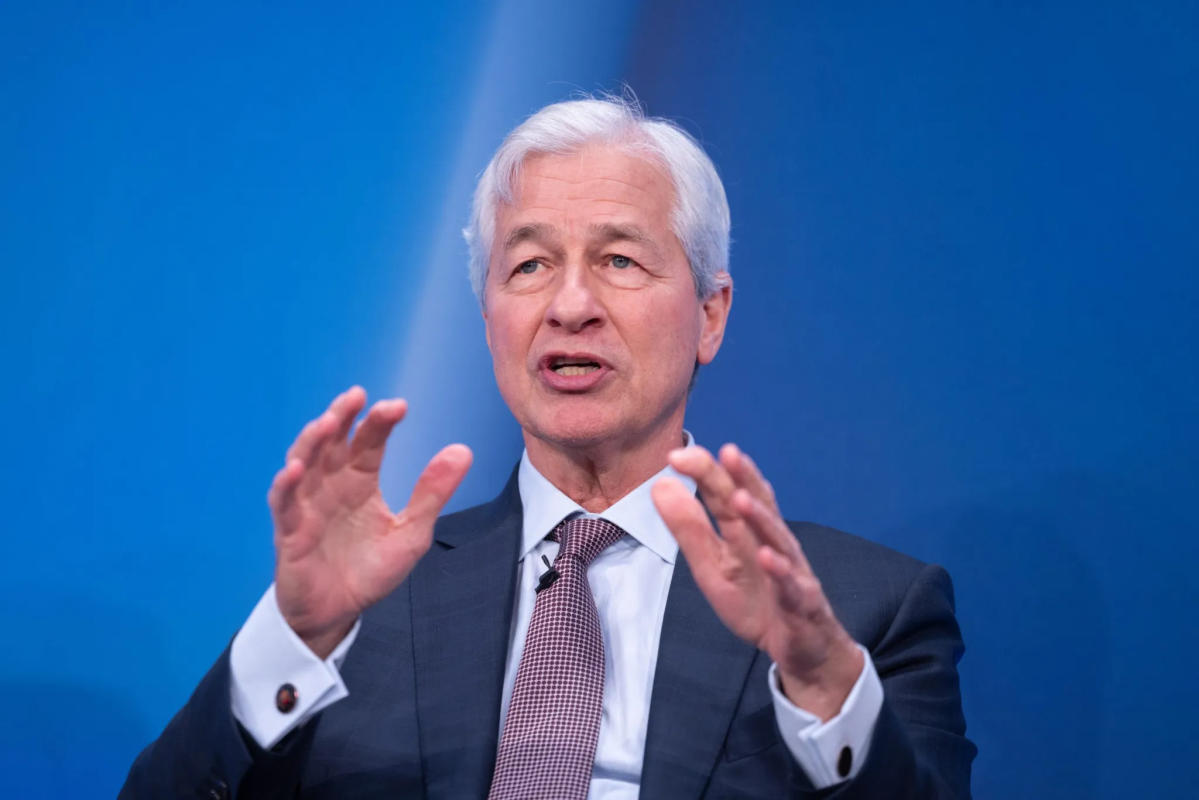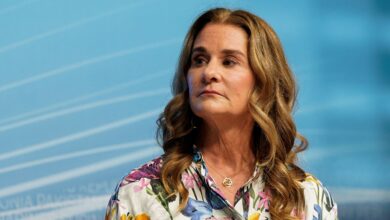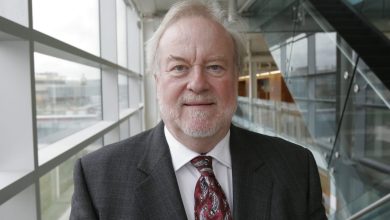Jamie Dimon Age, Date Of Birth, Bio, Family And Net Worth
Jamie Dimon: Age, Date of Birth & other info
Jamie Dimon, one of the most influential figures in global finance, was born on March 13, 1956, in New York City, United States. As of 2025, Jamie Dimon is 69 years old. Raised in a family with strong ties to the banking industry, Dimon’s Greek heritage and upbringing in an intellectually stimulating environment played a pivotal role in shaping his future career.Dimon’s grandparents emigrated from Greece, and his father, Theodore Dimon, worked as a stockbroker. This familial connection to finance provided Jamie with early exposure to the industry’s intricacies. Growing up in Queens, New York, he displayed a sharp intellect and an insatiable curiosity, traits that would later define his professional journey.
- Age: 69 Years
- Date of Birth: March 13, 1956
- Birth Place: New York City
- Height: 6 feet 2 inches
- Net Worth: $1.4 billion

Education
Jamie Dimon attended the Browning School, a prestigious private institution in Manhattan, where he excelled academically. He went on to pursue higher education at Tufts University, earning a degree in psychology and economics in 1978. During his time at Tufts, Dimon exhibited leadership qualities and developed a keen interest in economics, which led him to pursue a career in finance.After graduating, Dimon worked briefly in management consulting before enrolling at Harvard Business School. At Harvard, he stood out as an exceptional student, earning recognition as a Baker Scholar, a distinction awarded to the top 5% of the class. He graduated in 1982 with an MBA, fully equipped to embark on his journey in the competitive world of banking and finance.
Early Career
Jamie Dimon’s career began with an auspicious start at American Express, where he worked under the mentorship of Sandy Weill, a renowned banking executive. Dimon quickly rose through the ranks, demonstrating his exceptional analytical and leadership skills. Together, Weill and Dimon transformed American Express’s financial strategy, setting the stage for their subsequent ventures.In 1986, Dimon followed Weill to Commercial Credit, a struggling financial services company. Dimon played a key role in revitalizing the company, leading to its eventual merger with Primerica Corporation. This move marked the beginning of Dimon’s reputation as a turnaround expert. Over the next decade, Dimon and Weill orchestrated a series of mergers and acquisitions, culminating in the formation of Citigroup, one of the world’s largest financial institutions.
Break with Sandy Weill
Despite their successful partnership, Dimon and Weill’s relationship soured in 1998. Dimon’s departure from Citigroup was marked by professional disagreements and personal tensions. However, this setback turned out to be a blessing in disguise, as it allowed Dimon to carve out his independent path in the financial industry.
Leadership at Bank One
In 2000, Jamie Dimon was appointed CEO of Bank One, a struggling Midwest-based bank. Once again, Dimon demonstrated his ability to turn around ailing institutions. He implemented cost-cutting measures, streamlined operations, and improved customer service. Under his leadership, Bank One’s financial performance improved significantly, making it an attractive acquisition target for larger banks.
Rise at JPMorgan Chase
In 2004, JPMorgan Chase acquired Bank One, and Jamie Dimon became its President and Chief Operating Officer. Within a year, he was named CEO, and in 2006, he also assumed the role of Chairman. Under Dimon’s stewardship, JPMorgan Chase emerged as one of the most profitable and well-managed banks in the world.
Dimon’s leadership was particularly notable during the 2008 global financial crisis. While many financial institutions struggled to stay afloat, JPMorgan Chase remained relatively stable, thanks to Dimon’s cautious approach to risk management and his focus on maintaining a strong balance sheet. The bank’s acquisition of Bear Stearns and Washington Mutual during the crisis further solidified its position as a financial powerhouse.
Family Life
Jamie Dimon’s family life is characterized by stability and support. He is married to Judith Kent, whom he met while studying at Harvard Business School. The couple tied the knot in 1983 and have three daughters: Julia, Laura, and Kara.
Judith Kent has been a pillar of support throughout Dimon’s career, often staying out of the spotlight to focus on their family. Their daughters have pursued successful careers in their respective fields, maintaining the Dimon family’s tradition of excellence.
Health Challenges
In recent years, Dimon has faced significant health challenges. In 2014, he was diagnosed with throat cancer, undergoing treatment that included radiation and chemotherapy. He recovered successfully and returned to work with renewed vigor. However, in 2020, Dimon underwent emergency heart surgery to repair an acute aortic dissection. Despite these health setbacks, he continues to lead JPMorgan Chase with the same energy and determination that have defined his career.
Net Worth and Earnings
As of 2025, Jamie Dimon’s estimated net worth is $1.9 billion. This impressive fortune is the result of decades of leadership in the banking sector, as well as strategic investments and compensation packages.Dimon’s earnings as CEO of JPMorgan Chase include a base salary, performance bonuses, and stock options. In 2023, his total compensation package was reported to be approximately $34.5 million, reflecting his pivotal role in the bank’s continued success. Beyond his salary, Dimon has made significant investments in real estate and other ventures, further diversifying his wealth.
Philanthropy and Public Service
Jamie Dimon is known for his philanthropic efforts and commitment to public service. He has donated millions to educational institutions, healthcare initiatives, and community development programs. Dimon is also an advocate for economic equality, often speaking out on issues such as wage gaps and access to affordable housing.Through the JPMorgan Chase Foundation, Dimon has overseen substantial contributions to various causes, including small business development, workforce training, and environmental sustainability. His leadership extends beyond the boardroom, as he frequently engages in discussions about the role of banks in fostering inclusive economic growth.
Controversies and Criticism
Despite his many achievements, Dimon’s career has not been without controversy. Critics have accused him of being overly defensive about the banking industry’s role in the 2008 financial crisis. Additionally, JPMorgan Chase has faced legal challenges under his leadership, including a $13 billion settlement with the U.S. Department of Justice in 2013 over the bank’s role in selling faulty mortgage-backed securities.Dimon has also drawn criticism for his stance on regulation. While he has supported certain reforms, such as the Dodd-Frank Act, he has been vocal about his opposition to what he considers excessive regulatory burdens on financial institutions.
Legacy and Influence
Jamie Dimon’s impact on the banking industry is undeniable. His ability to navigate complex challenges, adapt to changing economic landscapes, and prioritize long-term stability over short-term gains has earned him widespread respect. As the longest-serving CEO of a major U.S. bank, Dimon’s leadership style has become a benchmark for excellence in corporate governance.Dimon’s annual shareholder letters are widely regarded as insightful analyses of global economic trends, offering a glimpse into his strategic thinking and vision for the future of banking. His influence extends beyond JPMorgan Chase, as he frequently advises policymakers and participates in international economic forums.
Conclusion
Jamie Dimon’s life and career are a testament to resilience, innovation, and unwavering dedication. From his early days in Queens to his rise as one of the most powerful figures in global finance, Dimon has consistently demonstrated a unique ability to lead and inspire. His legacy, marked by both triumphs and challenges, serves as a compelling narrative of what it takes to succeed in one of the world’s most demanding industries.As he approaches his 70s, Dimon shows no signs of slowing down. His continued leadership at JPMorgan Chase and his influence on the global stage underscore his enduring relevance and impact. Jamie Dimon remains a quintessential figure in modern banking, embodying the values of hard work, vision, and integrity.




